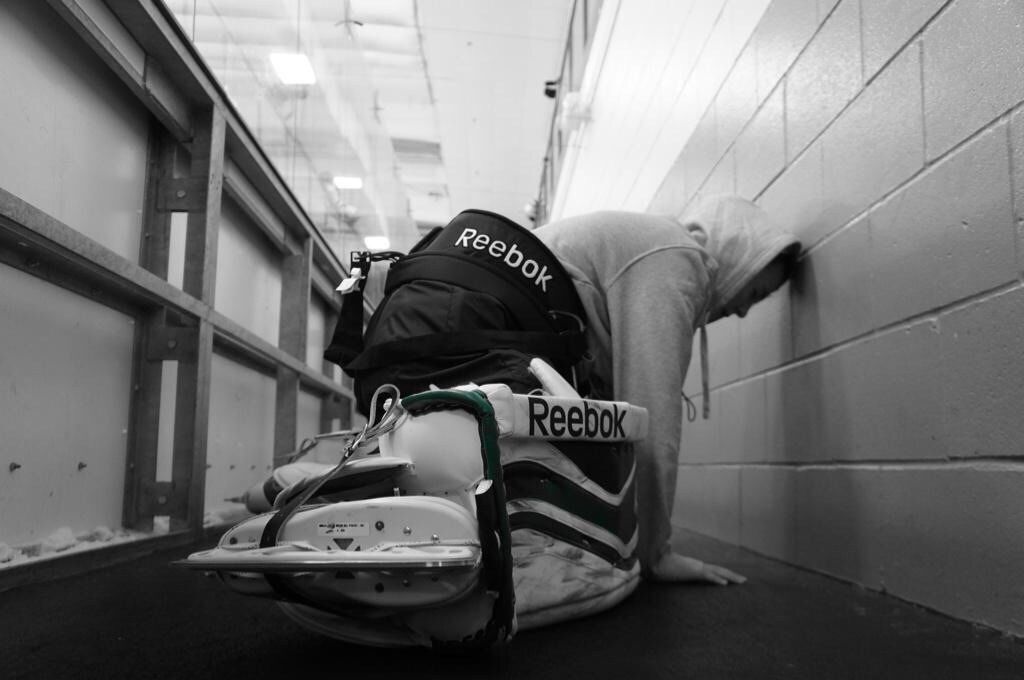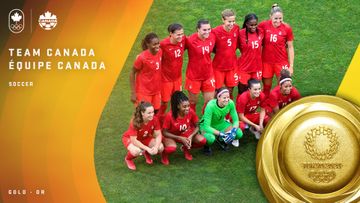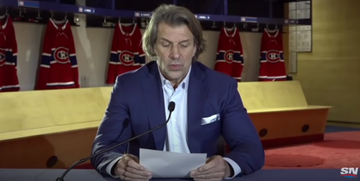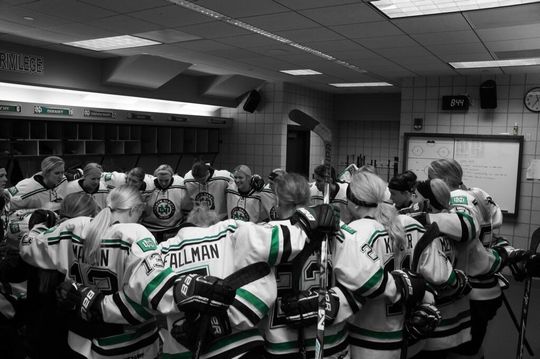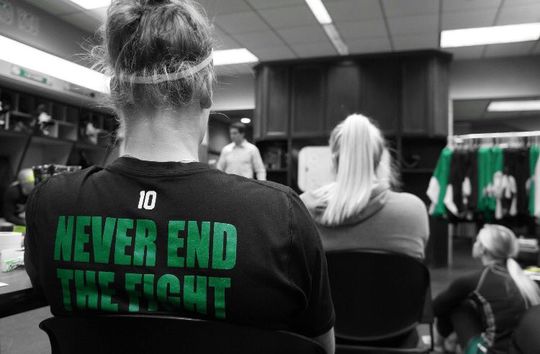(Photo: Michelle Karvinen)
In a decision including three opinions, all concurring in the judgment, the United States Court of Appeals for the Eighth Circuit ruled Tuesday that the district court erred in dismissing a lawsuit brought by 11 former members of the University of North Dakota women's hockey team for failure to state a claim. The appeals court ordered that the judgment be reversed and the case heard on its merits in "proceedings consistent with the opinion of this court."
In an unequivocal opinion endorsed by judge David R. Stras, authoring judge L. Steven Grasz determined that the district court should not have relied on the three-part test as the sole means of analysing a Title IX claim. Although the three-part test to evaluate participation opportunities in intercollegiate athletics is well-established, the decision makes clear that it is not the only measure of an institution's compliance with Title IX.
It's a legal theory that had never before been evaluated in a court of law, likely because the vast majority of Title IX cases rely on allegations of unequal participation opportunities, which are contained within the three-part test. (For an in-depth explanation of the unique legal arguments at issue in this case, see this article from June 2018, when the initial lawsuit was filed.)
While UND argued that subsequent policy clarifications and case law had solidified the three-part test as the universally-recognized standard in assessing Title IX compliance, Grasz neatly rejected this premise: "Far from transforming the three-part test into a cure-all for every Title IX ailment […]" begins one sentence dismissing the notion. Later, he writes that the 1996 clarification emphasizes an overall determination of compliance and does not advertise "the three-part test as an omnipotent antidote to all athletics-based Title IX violations."
The appeal judgment sets a potentially game-changing precedent by making clear that the widespread attention given to the three-part test, which was introduced in 1979 by the Department of Health, Education and Welfare of the Office for Civil Rights in A Policy Interpretation: Title IX and Intercollegiate Athletics, does not override the remainder of the document's contents.
"At the outset, the 1979 Interpretation's plain text and structure show that the agency expressly gives institutions different ways to comply with the different obligations which the agency has decided Title IX imposes," Grasz writes. "Our precedent directs us to give controlling deference to the entire 1979 Interpretation, not just the three-part test […] The agency's decisions to repeatedly clarify the 133 words in the three-part test does not mean it has decided to abandon the 1979 Interpretation's other 5,300-plus words."
"We can only assume, in other words, that the agency did not go to the trouble of constructing a ten-page document only to have a few lines of it — those devoted to the three-part test — mean anything," concurs Stras.
The court of appeals also determined that the district court was incorrect in determining that the contact sports clause under the Selection of Sports section of the 1979 policy interpretation is inconsistent with the applicable regulation. The policy interpretation makes clear that, as a general rule, institutions aren't required to sponsor identical sports in men's and women's categories, but notes that they may be required to sponsor a team under certain conditions, depending on whether the sport is considered contact or non-contact. Ice hockey is designated in the regulation to be a contact sport.
4. Application of the Policy - Selection of Sports.
In the selection of sports, the regulation does not require institutions to integrate their teams nor to provide exactly the same choice of sports to men and women. However, where an institution sponsors a team in a particular sport for members of one sex, it may be required either to permit the excluded sex to try out for the team or to sponsor a separate team for the previously excluded sex.
a. Contact Sports - Effective accommodation means that if an institution sponsors a team for members of one sex in a contact sport, it must do so for members of the other sex under the following circumstances:
(1) The opportunities for members of the excluded sex have historically been limited; and
(2) There is sufficient interest and ability among the members of the excluded sex to sustain a viable team and a reasonable expectation of intercollegiate competition for that team.
"Within the 1979 Interpretation, the Contact Sports Clause squarely answers the question of how separate contact sports teams effectively accommodate students," writes Grasz. "That clause's use of the mandatory term 'must' unambiguously requires an institution sponsoring a single-sex contact sports team (e.g., men's ice hockey) to sponsor a team for the other sex (e.g., women's ice hockey) if [the two outlined conditions have been met]."
Concurring, Stras writes: "Even though no one should mistake the policy interpretation for a statute, its text leaves no doubt that the contact-sports provision applies in these circumstances; it is consistent with the regulation; and none of the later agency documents say anything that calls either conclusion into question."
Though judge Steven M. Colloton was much more equivocal in assessing the current validity of the 1979 policy interpretation relied upon by the athletes, he ultimately concurred that the lawsuit's dismissal for failure to state a claim was premature.
To have established that the three-part test is not the be-all and end-all of Title IX is a key victory. Whether the athletes' claim succeeds in substance will likely depend on the district court's analysis of the 1979 policy interpretation and its historical implementation (or lack thereof) by the Office for Civil Rights. Because the initial suit was dismissed in response to a preliminary motion, it has yet to be heard in full. The appeal judgment will allow the athletes the opportunity to make their case in earnest.
"[G]iven a level playing field, or in this case, a properly smoothed ice rink, the athletes may be able to state an actionable Title IX claim," wrote Grasz.
Should they succeed, such precedent would not only provide a basis for the return of women's hockey at UND, but likely transform the entire landscape of NCAA sports.
